 This Training and Competition in Warm Conditions article is contributed by Phil Watson – Research Student, Dept of Biomedical Sciences, University Medical School, Aberdeen
This Training and Competition in Warm Conditions article is contributed by Phil Watson – Research Student, Dept of Biomedical Sciences, University Medical School, Aberdeen
Training and Competition in Warm Conditions
For those living in the UK, the summer is now upon us, and the prospect of training and / or competing in warm conditions is a (albeit remote) possibility. But should this make a difference to your training, and what considerations should be made before, during and after exercise to compensate for the environmental conditions?
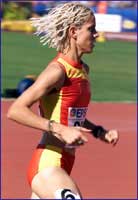 It is widely accepted by Exercise Physiologists that exercise capacity, or the maximum amount of work an individual can complete at a particular intensity, is significantly reduced when performing in a warm environment. A recent laboratory-based study conducted at the University of Aberdeen asked trained individuals to exercise to exhaustion in an room maintained at four different temperatures, 4, 11, 21, and 31C (Galloway and Maughan, 1997). It is clear from the results of this study that the volunteers were capable of completing considerably more exercise at 11C than at the warmer temperatures. Surprisingly, exercise capacity was found to be significantly reduced at the relatively mild temperature of 21C, a temperature that is commonly experienced during the British summer time.
It is widely accepted by Exercise Physiologists that exercise capacity, or the maximum amount of work an individual can complete at a particular intensity, is significantly reduced when performing in a warm environment. A recent laboratory-based study conducted at the University of Aberdeen asked trained individuals to exercise to exhaustion in an room maintained at four different temperatures, 4, 11, 21, and 31C (Galloway and Maughan, 1997). It is clear from the results of this study that the volunteers were capable of completing considerably more exercise at 11C than at the warmer temperatures. Surprisingly, exercise capacity was found to be significantly reduced at the relatively mild temperature of 21C, a temperature that is commonly experienced during the British summer time.
What causes this reduction in exercise capacity? Well at the moment this is still a matter of debate, but it is generally accepted that the decline in performance is caused through a combination of dehydration, additional cardiovascular strain, changes to the metabolism of carbohydrates and fats and potentially an acceleration of central nervous system fatigue. While it is currently unknown how these factors interact to limit exercise performance, a number of strategies can employed by you to reduce this loss.
While a diet high in carbohydrate is widely advocated for most runners, it may be particularly important when regularly training in a warm environment. The use of carbohydrates as a fuel for exercise has been found to be elevated in the heat, resulting in a quicker depletion of the body’s limited stores of glycogen. This situation is known to contribute to the development of fatigue during endurance exercise in comfortable environmental conditions. While performance in the heat is generally not thought to be limited by the availability glycogen, it is important to ensure stores are adequately replenished following exercise, particularly if a number of training sessions are to be undertaken over a short period of time.
The major path for heat loss in a warm environment is through the evaporation of sweat from the skin’s surface. Although sweat production is an effective means of dissipating heat, it occurs at the expense of the body’s fluid and salt (sodium) stores, inevitably leading to dehydration. Without the consumption of drinks to replace the lost fluid and sodium, a reduction in blood volume occurs placing additional strain on the cardiovascular system. A reduction in the volumes of sweat produced can also occur, resulting in a dramatic rise in body temperature and in extreme cases the development of heat illness.
However, scientific research has shown that even when drinks are consumed, rarely do individuals consume adequate volumes of fluid to replace these losses (this has been termed voluntary dehydration). Therefore it is good practice to develop an effective drinking strategy, with particular emphasis on drinking before, during and after training. The American College of Sports Medicine (ACSM, 1996) has recently suggested that individuals should attempt to consume between 400 – 600ml of fluids 2 hours before starting exercise to help ensure that the body is well hydrated before commencing any activity.
During exercise the ACSM propose that 150 – 350 ml of fluids should be ingested at 15 – 20 intervals. However these recommendations are quite vague as it suggests individuals should drink anywhere between 450 – 1400ml/hour. It is also worth considering that during most sporting events it is difficult to achieve such high rates of drinking. As many will know, trying to drink large volumes of fluid during a race is not particularly convenient and often leads to gastrointestinal distress (e.g. feelings of bloatedness and stomach cramps). From a practical standpoint it is important to attempt to drink as much fluid as you find comfortable, with practice you will probably 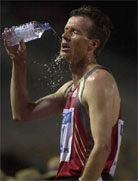 find that you are able to take on greater volumes whilst out running.
find that you are able to take on greater volumes whilst out running.
The subject of what and how much to drink following exercise has been the subject of much research in recent years. As it is almost inevitable that some degree of dehydration will occur during exercise, it is important to ensure this is adequately replaced before the next training session. A good practice to determine how much fluid is required to replace these losses is to get into the habit of weighing yourself before and after each training session. For every kilo lost it has been shown that at least 1 ½ litres of fluid is required to ensure that this loss is recovered. To assist in the replacement of lost fluids it is advised that drinks containing a quantity of sodium are consumed, such as many commercially available sports drinks.
Continuous monitoring of your hydration status can be easily achieved by simply paying attention to the colour, frequency and volume of urine you produce. When dehydrated, the body attempts to conserve fluids by limiting the production of urine. Therefore when in this state, urine production will typically be infrequent, characterised by a small volume and a dark yellow colour. On the other hand, when well hydrated, large volumes of clear urine will be frequently produced.
While there has been a great deal of scientific research into prolonging exercise capacity when exercising in the heat, more often than not a common sense approach will help you get the most from your training. If possible, it is wise to plan training sessions during times when the ambient temperature is lower, such as during the morning and / or in the evening. It is also worth considering your choice of clothing. Investing in garments made from materials designed to breathe and wick excess sweat away from the skin’s surface will help assist in the loss of heat from the body, helping to maintain a lower body temperature. Finally, when planning to train for any period of time in the sun it is important to ensure that a good water resistant sun cream is used on exposed areas of skin to prevent the development of sun burn and potentially skin cancer.
ACSM. Position Stand on Exercise and Fluid Replacement. Medicine and Science in Sports and Exercise 28, i-vii, 1996.
Galloway SD and Maughan RJ. Effects of ambient temperature on the capacity to perform prolonged cycle exercise in man. Medicine and Science in Sports and Exercise 29: 1240-1249, 1997.
This article contributed by Phil Watson
View further articles under the Physiology section:
![]() Skeletal Muscle Physiology – more scientific aimed more at students and coaches
Skeletal Muscle Physiology – more scientific aimed more at students and coaches
![]() Exercise and the Immune system
Exercise and the Immune system
![]() Training and competition in warm conditions
Training and competition in warm conditions
![]() What body type are you?
What body type are you?
![]() Lactic Acid and running: myths,legends and truths
Lactic Acid and running: myths,legends and truths
-
- – theABC
-
- – theABC
- – theABC
- More articles to follow






















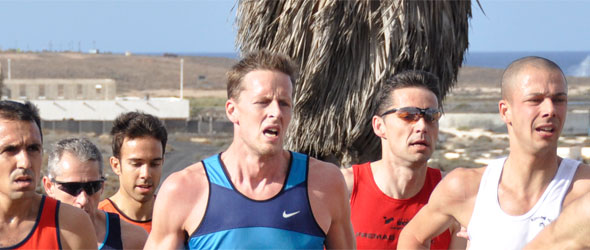

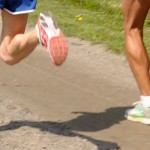
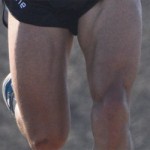
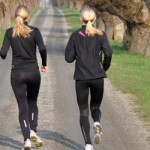
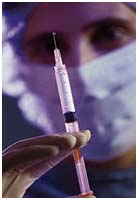

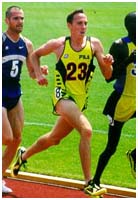

Any thoughts on the effects of Bikram Yoga?!
The same would apply for most exercise however due to the weight bearing during running in the heat, the circumstances are far more heightened. Hydrate before, during and after exercise for good measure and eat to restore.